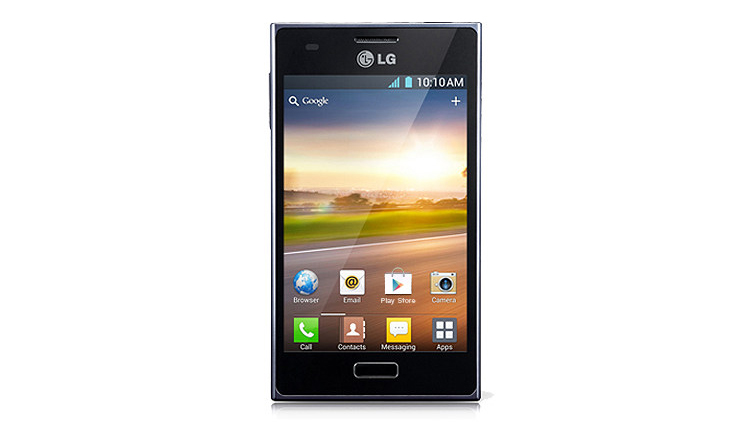TechRadar Verdict
The LG Optimus L5 could have been far better had LG just upped the processing power and the hardware specs a little bit. Instead it's a disappointing piece of tech, despite its potential; especially with an NFC antennae. Spend a little extra money and you'll pick up a phone with better specs.
Pros
- +
Ice Cream Sandwich
- +
NFC enabled
- +
Good battery life
- +
4-inch display
Cons
- -
Slow processor
- -
Low camera quality
- -
Glare in direct sunlight
- -
No front camera
Why you can trust TechRadar
The LG Optimus L5 is the second of three LG Optimus smartphones that increase in specs, flanked either side by the LG Optimus L3 and LG Optimus L7.
With this middle phone weighing in at around £10 (around AU$15/US$16) per month, or £140/US$190 (around AU$213) SIM-free, does it give enough bang for your buck (or punch for your pound)?
You'll note straight away that the LG Optimus L5, or E610, is light, at just 125g (4.4oz) and seemingly slim, with a smooth metal edging. It's well balanced in the palm, but the plastic patterned back does lend it an air of cheapness, as well as not contributing much in the way of grip.

The straight-sided design of the Optimus handsets is welcome though; a small detail that helps distinguish it slightly from the usual mid-range offerings.
Inside, the LG Optimus L5 packs only a 800MHz processor, which is relatively poor compared to the 1GHz of the similarly priced HTC One V, but similar to the cheaper Nokia Lumia 610.
Outside there are very few additions to the clean design. The NFC antenna, 5MP camera (plus LED flash) and speakers reside on the back of the phone.

The front carries its 4-inch display, home key and soft return and menu buttons. At only 144ppi, the capacitive touchscreen with low-contrast display is a minus for this handset, meaning visibility in sunlight (or even just direct indoor light) is poor... and it all goes completely wrong if you hold it at even a slightly wrong angle. There are no deep blacks and saturated colours here, sadly.
Sign up for breaking news, reviews, opinion, top tech deals, and more.
As for the rest, the volume rocker (also used as the physical camera key) sits snugly on the left side, the micro USB port on the bottom and the power key and 3.5mm headphone jack on the top.
LG has squeezed 2GB of internal storage into the slim frame, with the option of adding up to 32GB more with a microSD, the port for which sits just above the standard 1500 mAh battery.

We found the plastic battery casing for the battery access somewhat difficult to get off at times, with the prising indent located at the top of the frame. Still, that's a minor grumble, and at least you can actually remove the battery, should you need to.
Overall it seems a shame to team Android 4.0 Ice Cream Sandwich with such slow processing power - it's a bit like clamping stabilisers onto Bradley Wiggins' bike.
Consequently there's the occasional sense of lag when, say, swiping between home screens or dipping in and out of apps. Even games of Angry Birds are somewhat jerky.

For such a small price point, perhaps that won't be an issue, but for a just little more cash there are handsets with dual-core processors, such as the HTC One S, which create smoother navigational experiences.
